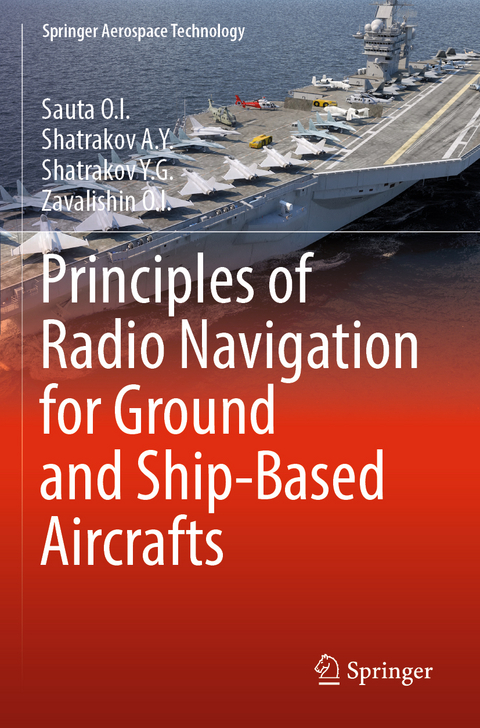
Principles of Radio Navigation for Ground and Ship-Based Aircrafts
Springer Verlag, Singapore
978-981-13-8295-6 (ISBN)
Dr. Sauta O.I. is an expert on air radio engineering systems for navigation and landing, and holds 20 patents for inventions in the field of radio engineering systems for satellite navigation. Prof. Shatrakov A.Y. is the chair of radio engineering systems at the Institute of Radio Engineering, St. Petersburg State University. His chief research interests are in the area of radio navigation systems for air traffic control and safety. Shatrakov Y.G., Professor, Doctor of Technical Sciences, Honored Science Worker of Russia, RATS full member, graduated from Leningrad Institute of Aviation Instrumentation and Leningrad University (Physics and Mathematics Faculty). He defended his thesis in 1966. He published more 400 monographs and textbooks on radio navigation, radiolocation, production organization. He prepared more than 100 candidates and doctors of science as a scientific adviser and scientific consultant. Scientific directions founded under the guidance of Y.G. Shatrakov are as follows: relative radio navigation; increased noise immunity of angle measuring systems due to suppression of correlation errors and interference; secondary radiolocation by individual numbers; reduction of labor intensity in the production of radio electronic products due to the introduction of flexible automated productions. He is the author including 30 patents for inventions in the field of radio technical systems; scientific supervisor of international projects for the creation of the MLS with Thomson-CSF (1980–1988), with US enterprises for the creation of joint LRNSs (long-range radio technical navigation systems) (Tropic-Loran) (1984), chief designer of on-board antenna-feed systems; founder of the correlation interference theory in aviation radio technical complexes and systems. Zavalishin O.I. is an expert on the development and production of aeronautical equipment, land and aircraft equipment, land systems as a functional addition to global satellite navigational systems, local differential systems, and landing radio-radar equipment for civil aviation. He is also a member of the council of chief designers, developers and producers of navigational hardware (NAP) for the GNSS.
Basic principles of radio navigation.- The concept of radio navigation systems.- Short-range navigation systems.- Systems of long-range radio navigation with ground-based stations.- Instrumental landing systems.- Satellite radionavigation systems differential and relative operation modes of systems.- Augmentation systems to ground-based GNSs.
| Erscheinungsdatum | 07.07.2020 |
|---|---|
| Reihe/Serie | Springer Aerospace Technology |
| Zusatzinfo | 14 Illustrations, color; 95 Illustrations, black and white; X, 130 p. 109 illus., 14 illus. in color. |
| Verlagsort | Singapore |
| Sprache | englisch |
| Maße | 155 x 235 mm |
| Themenwelt | Technik ► Elektrotechnik / Energietechnik |
| Technik ► Fahrzeugbau / Schiffbau | |
| Technik ► Luft- / Raumfahrttechnik | |
| Technik ► Nachrichtentechnik | |
| Schlagworte | Functions of GBAS • GNSS failures • GRAS automated system • ground-based GNSS • landing systems • Local-Area Augmentation System (LAAS) • Long-range radio navigation • Microwave systems • Radio waves propagation • Satellite augmentation systems • Satellite radionavigation • Short-range radio navigation • Tactical Air Navigation System (TACAN) |
| ISBN-10 | 981-13-8295-6 / 9811382956 |
| ISBN-13 | 978-981-13-8295-6 / 9789811382956 |
| Zustand | Neuware |
| Haben Sie eine Frage zum Produkt? |
aus dem Bereich


